Shuangda Duan
Dynamic Interaction Probabilistic Movement Primitives
Jan 30, 2019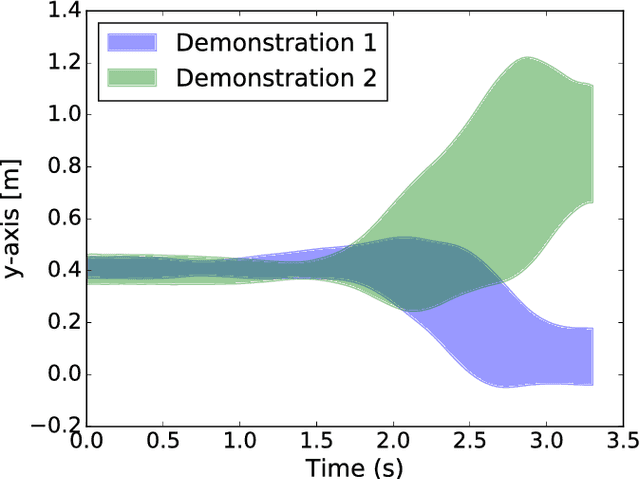
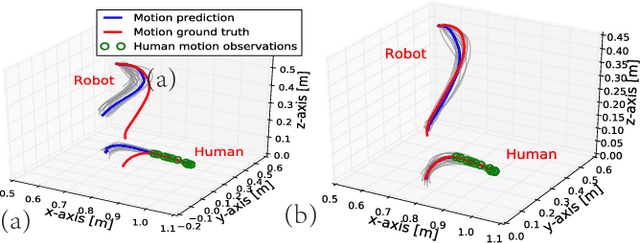
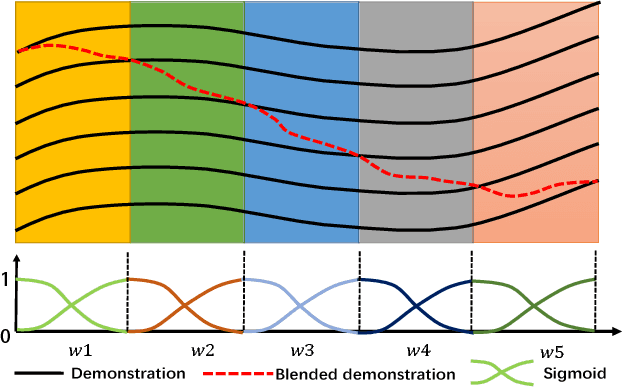
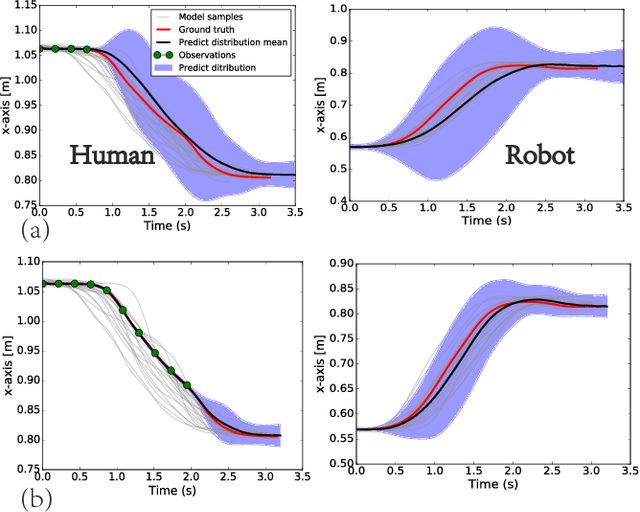
Abstract:Human-robot collaboration is on the rise. Robots need to increasingly improve the efficiency and smoothness with which they assist humans by properly anticipating a human's intention. To do so, prediction models need to increase their accuracy and responsiveness. This work builds on top of Interaction Movement Primitives with phase estimation and re-formulates the framework to use dynamic human-motion observations which constantly update anticipatory motions. The original framework only considers a single fixed-duration static human observation which is used to perform only one anticipatory motion. Dynamic observations, with built-in phase estimation, yield a series of updated robot motion distributions. Co-activation is performed between the existing and newest most probably robot motion distribution. This results in smooth anticipatory robot motions that are highly accurate and with enhanced responsiveness.
Endowing Robots with Longer-term Autonomy by Recovering from External Disturbances in Manipulation through Grounded Anomaly Classification and Recovery Policies
Sep 11, 2018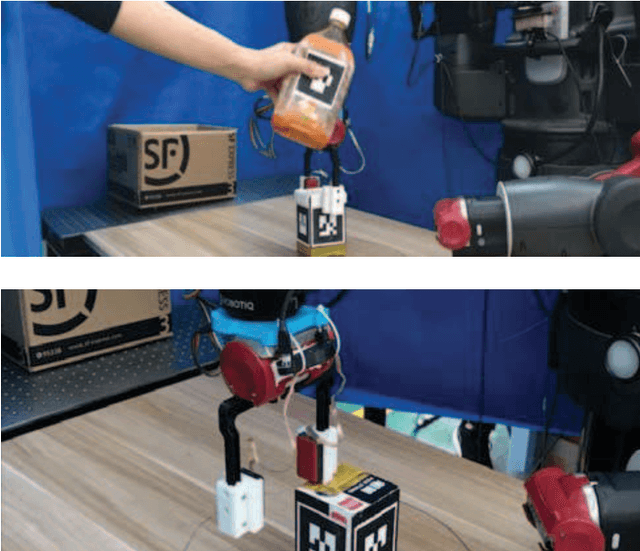
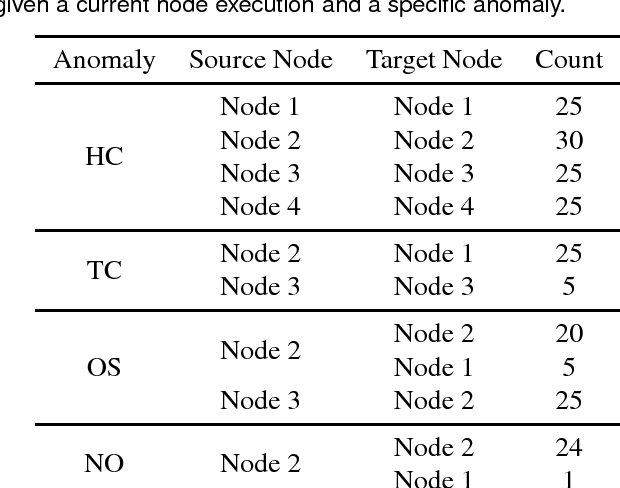
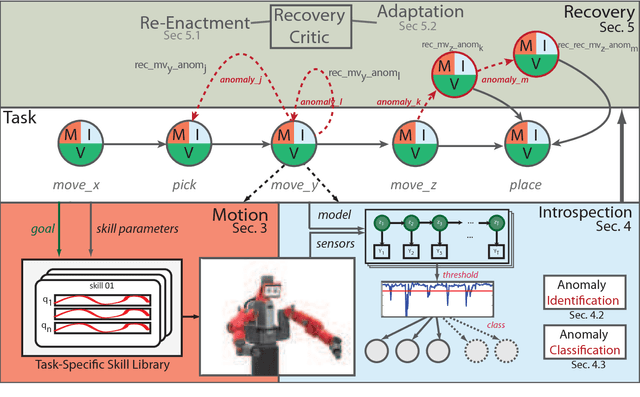
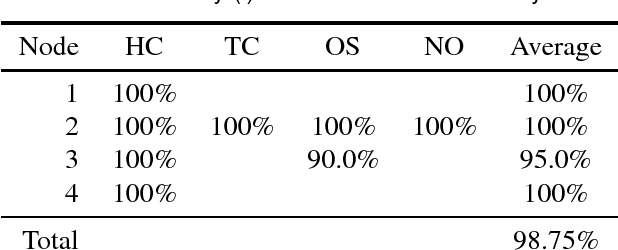
Abstract:Robot manipulation is increasingly poised to interact with humans in co-shared workspaces. Despite increasingly robust manipulation and control algorithms, failure modes continue to exist whenever models do not capture the dynamics of the unstructured environment. To obtain longer-term horizons in robot automation, robots must develop introspection and recovery abilities. We contribute a set of recovery policies to deal with anomalies produced by external disturbances as well as anomaly classification through the use of non-parametric statistics with memoized variational inference with scalable adaptation. A recovery critic stands atop of a tightly-integrated, graph-based online motion-generation and introspection system that resolves a wide range of anomalous situations. Policies, skills, and introspection models are learned incrementally and contextually in a task. Two task-level recovery policies: re-enactment and adaptation resolve accidental and persistent anomalies respectively. The introspection system uses non-parametric priors along with Markov jump linear systems and memoized variational inference with scalable adaptation to learn a model from the data. Extensive real-robot experimentation with various strenuous anomalous conditions is induced and resolved at different phases of a task and in different combinations. The system executes around-the-clock introspection and recovery and even elicited self-recovery when misclassifications occurred.
Fast, Robust, and Versatile Event Detection through HMM Belief State Gradient Measures
Jun 20, 2018
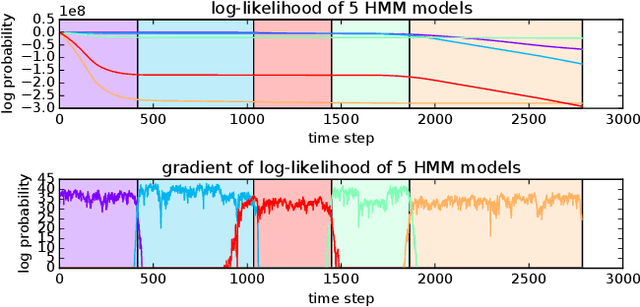
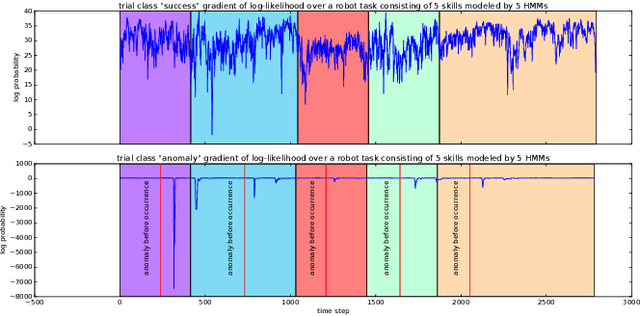

Abstract:Event detection is a critical feature in data-driven systems as it assists with the identification of nominal and anomalous behavior. Event detection is increasingly relevant in robotics as robots operate with greater autonomy in increasingly unstructured environments. In this work, we present an accurate, robust, fast, and versatile measure for skill and anomaly identification. A theoretical proof establishes the link between the derivative of the log-likelihood of the HMM filtered belief state and the latest emission probabilities. The key insight is the inverse relationship in which gradient analysis is used for skill and anomaly identification. Our measure showed better performance across all metrics than related state-of-the art works. The result is broadly applicable to domains that use HMMs for event detection.
Recovering from External Disturbances in Online Manipulation through State-Dependent Revertive Recovery Policies
Apr 02, 2018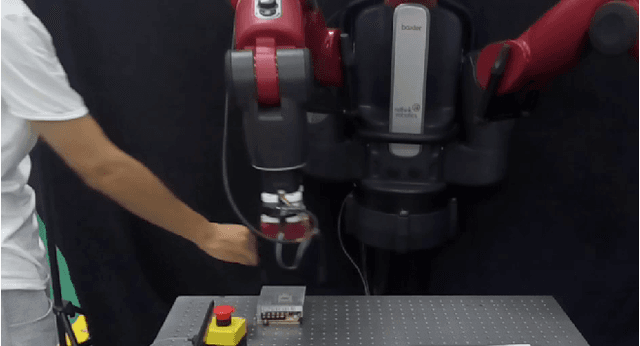
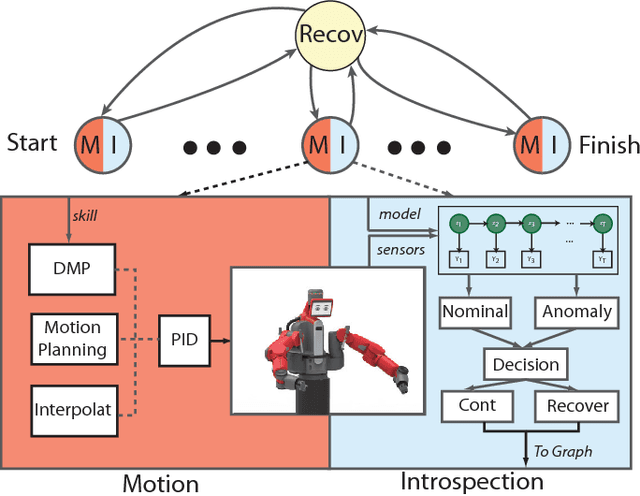
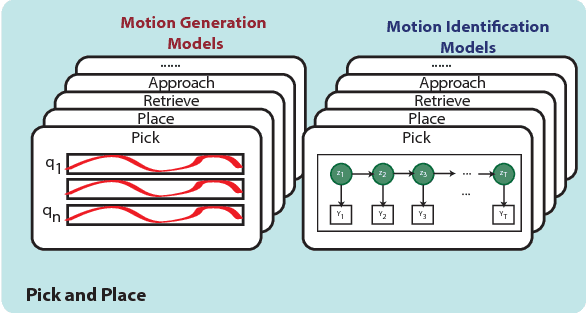
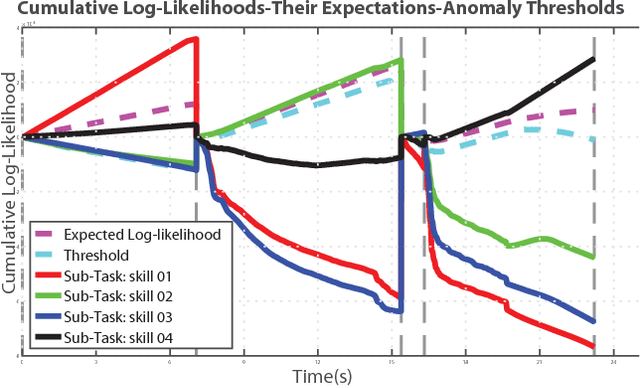
Abstract:Robots are increasingly entering uncertain and unstructured environments. Within these, robots are bound to face unexpected external disturbances like accidental human or tool collisions. Robots must develop the capacity to respond to unexpected events. That is not only identifying the sudden anomaly, but also deciding how to handle it. In this work, we contribute a recovery policy that allows a robot to recovery from various anomalous scenarios across different tasks and conditions in a consistent and robust fashion. The system organizes tasks as a sequence of nodes composed of internal modules such as motion generation and introspection. When an introspection module flags an anomaly, the recovery strategy is triggered and reverts the task execution by selecting a target node as a function of a state dependency chart. The new skill allows the robot to overcome the effects of the external disturbance and conclude the task. Our system recovers from accidental human and tool collisions in a number of tasks. Of particular importance is the fact that we test the robustness of the recovery system by triggering anomalies at each node in the task graph showing robust recovery everywhere in the task. We also trigger multiple and repeated anomalies at each of the nodes of the task showing that the recovery system can consistently recover anywhere in the presence of strong and pervasive anomalous conditions. Robust recovery systems will be key enablers for long-term autonomy in robot systems. Supplemental info including code, data, graphs, and result analysis can be found at [1].
Learning Human-Robot Collaboration Insights through the Integration of Muscle Activity in Interaction Motion Models
Aug 08, 2017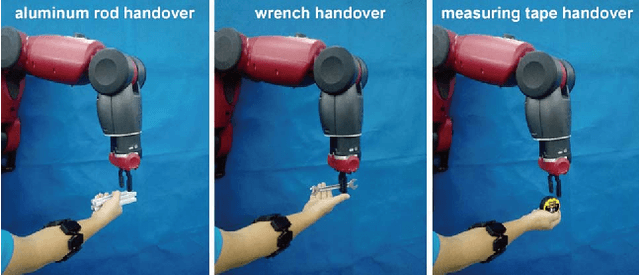
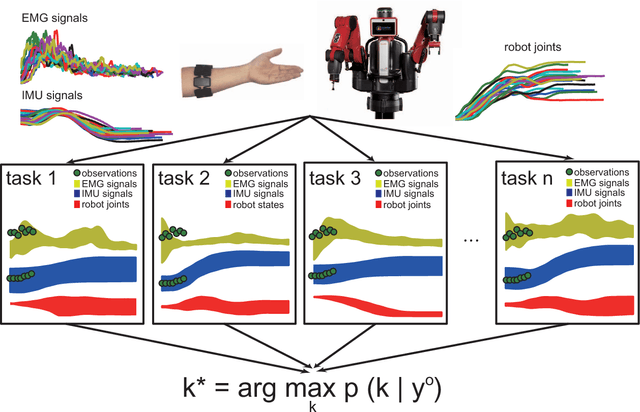

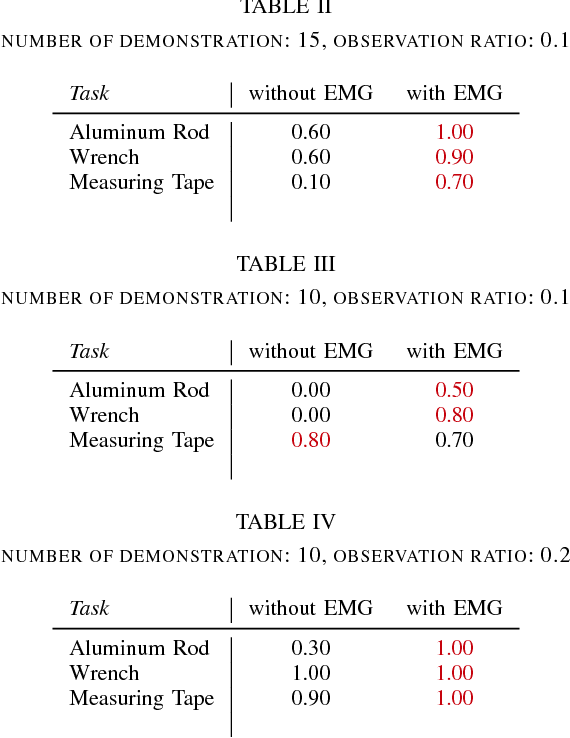
Abstract:Recent progress in human-robot collaboration makes fast and fluid interactions possible, even when human observations are partial and occluded. Methods like Interaction Probabilistic Movement Primitives (ProMP) model human trajectories through motion capture systems. However, such representation does not properly model tasks where similar motions handle different objects. Under current approaches, a robot would not adapt its pose and dynamics for proper handling. We integrate the use of Electromyography (EMG) into the Interaction ProMP framework and utilize muscular signals to augment the human observation representation. The contribution of our paper is increased task discernment when trajectories are similar but tools are different and require the robot to adjust its pose for proper handling. Interaction ProMPs are used with an augmented vector that integrates muscle activity. Augmented time-normalized trajectories are used in training to learn correlation parameters and robot motions are predicted by finding the best weight combination and temporal scaling for a task. Collaborative single task scenarios with similar motions but different objects were used and compared. For one experiment only joint angles were recorded, for the other EMG signals were additionally integrated. Task recognition was computed for both tasks. Observation state vectors with augmented EMG signals were able to completely identify differences across tasks, while the baseline method failed every time. Integrating EMG signals into collaborative tasks significantly increases the ability of the system to recognize nuances in the tasks that are otherwise imperceptible, up to 74.6% in our studies. Furthermore, the integration of EMG signals for collaboration also opens the door to a wide class of human-robot physical interactions based on haptic communication that has been largely unexploited in the field.
 Add to Chrome
Add to Chrome Add to Firefox
Add to Firefox Add to Edge
Add to Edge